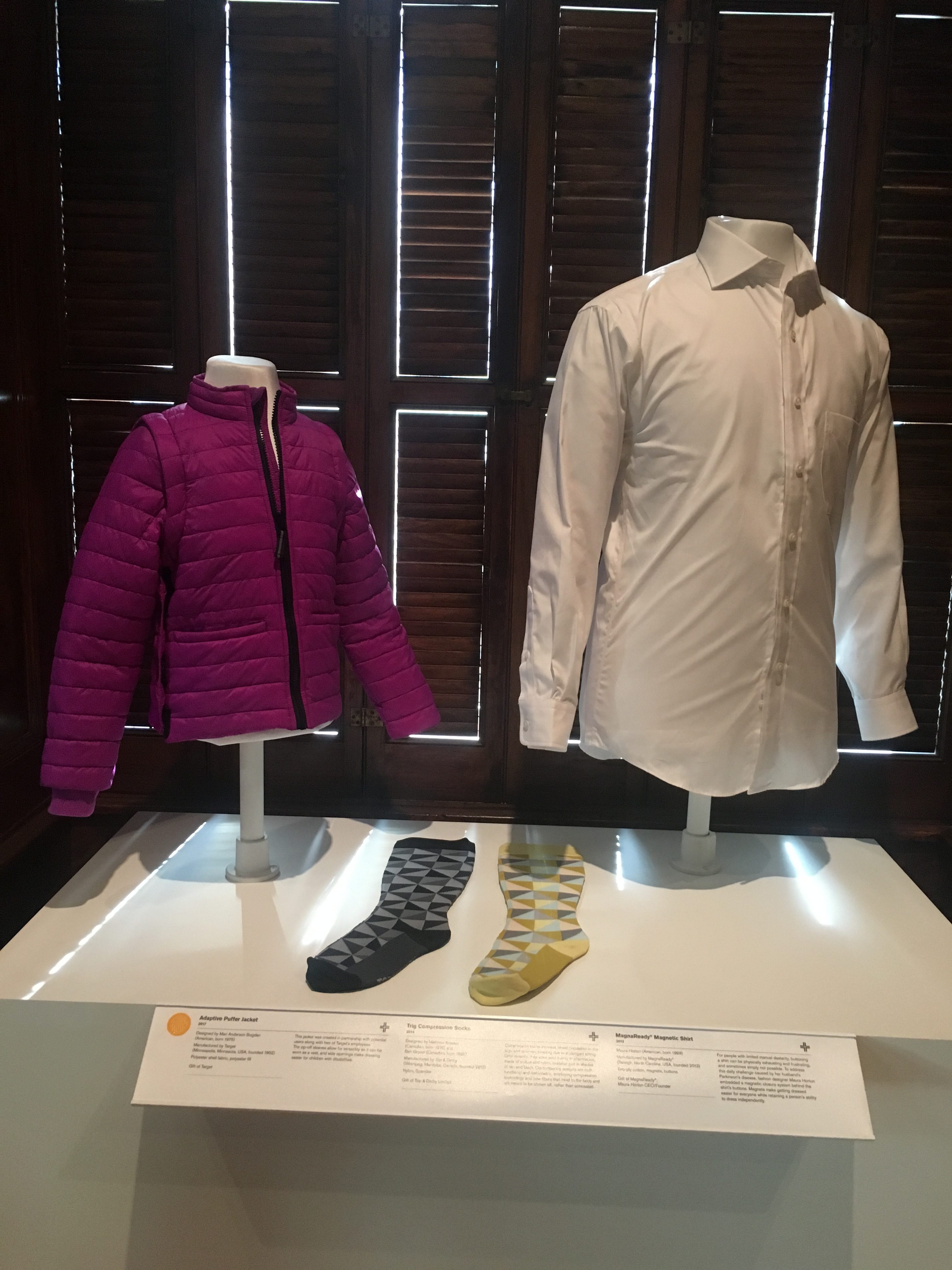1.The title of the object is Compression Socks. It was designed by Matthew Kroeker and Ben Grynol and manufactured by Top & Derby. It is dated 2014. Its medium is nylon, spandex. Compression socks increase blood circulation in the legs and minimize swelling that results from prolonged sedentariness. Until recently, they were sold mainly in pharmacies, made of cotton and nylon, in shades of tan and black. Contemporary designs are both functional and fashionable, employing compression technology and new fibers that mold to the body and are meant to be shown off, rather than concealed.
2.The title of the second object is the Bendable Bathing Wand. The prototype of the object is exhibited in the museum. It was designed by Michael Graves and manufactured by Moen Inc.. It is dated 2015. Its medium is polypropylene, tpe, aluminum, synthetic fibers.When we experience an injury, or as we age, our range of motion can decrease, making rigid bathing wands difficult to use. This flexible, bendable bathing wand facilitates the cleaning of hard to reach places. Its interchangeable heads come in three materials and textures and can be removed for handheld use without the wand.

3.The third object is pair of shoes called ‘Flyease’. It was designed by Tobie Hatfield and manufactured by Nike, Inc.. It is dated 2015. Its medium is synthetic materials, velcro, plastic zipper. FlyEase was inspired by Matthew Walzer, a teenager with cerebral palsy, who wrote to Nike to help solve the challenge of tying his shoelaces. The result was a shoe with a wrap-around zipper system that allows easy entry and exit of the foot from the back rather than from above, giving Matthew a new-found sense of independence and benefitting many.
Reflection- My overall experience of the Cooper Hewitt Museum was extremely satisfying. It was hard to choose my top three objects as all of them were inventive, creative and efficient. Most of the objects exhibited could be used by the disabled as well as the abled because they made life easier in general. Their purpose was to make everyday tasks more productive and less time consuming. Some were more about the emotional trouble that the disabled experience than their physical illness. Thus there were fancy earring aids decorated with rhinestones and colourful prosthetic legs to not only aid there disability but also install confidence in them.





